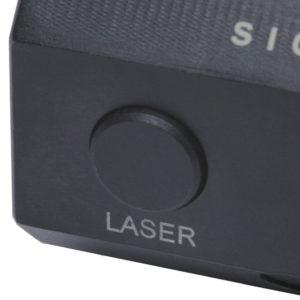Sightmark LoPro Green Rifle Laser Light Combo Review
Written by Jamie Trahan, 18-year Law Enforcement Officer and Sightmark Pro Staff Member
The distinct sound of glass breaking.
The thundering boom of your door getting kicked open.

For a split second, you think you’re dreaming. Then, it hits you—this is real and your body dumps adrenaline into your system. Before you can fully open your eyes, your feet hit the floor. If you opt to use an AR-15—or any other modern sporting rifle or pistol caliber carbine—you retrieve it and make it ready as you rush out of the bedroom. Your job as the protector of your family is to find the intruder intent on during harm and you want it done as quickly and safely as possible. Your shots must be precise because any stray round poses a danger to your family.
In the pursuit of helping you protect the ones you love, in addition to the myriad of sporting uses, Sightmark released the second generation of its LoPro flashlight and laser combo models. This generation, as with just about every other product on the market, is a modernized model that fixes the shortcomings of the first edition. You owe it to yourself to look at these because the first generation is no comparison to the product out now.
Directly from Sightmark.com:
The Sightmark LoPro Mini Combo Green Laser and Light replaces SM25004 (LoPro Combo Laser and Light) and features a more compact design, high-output white LED illumination (up to 300 lumens) and Class IIIa laser with a range of up to 600 yards at night (50 yards in daylight). Perfect for close quarters and low-light environments, the lightweight LoPro Mini Combo Laser and Light features IPX5 weather-resistant and shockproof reliability, digital switch operation, push-button or pressure-pad operation, hand-adjustable windage and elevation, and up to 23 hours of operation from a single CR123A battery (38 min. on max light and laser.) The LoPro Mini Combo is recoil rated up to .308 and mounts perfectly to Weaver and Picatinny rails.”
The model I tested was Model SM25012, which combines a 300-lumen LED white light and 520nm Class IIIa compact green aiming laser. The tactical light has three settings for low and full power along with a strobe feature. Lighting adjustments are made by rotating the bezel, which has clearly marked settings. The laser and light can be operated independently or used in conjunction with one another to blind your adversary with the white light, disorient him with the strobe, and provide a distinct aiming point. There are ambidextrous activation switches mounted on both sides of the unit and the pressure pad.

The advantages of having an aiming laser and light in one compact package are without question. In my residence, due to the floorplan, 35 feet is the farthest shot point to point that I would have to take. No doubt, there are some of you out there that could easily double that inside your home. The point is, in my opinion, while a handgun could be used to make that shot, a carbine is capable of a much more precise shot. With a properly zeroed laser, you can be practically surgical at that range.
I zeroed the LoPro laser within a handful of rounds by cheating a bit. I adjusted it to match the central red dot of my reticle prior to going to the range and then did fine-tuning from there. Several mag dumps later, the laser held zero with no issues.
Now. There’s a couple of questions I know everyone is asking.
First, 300 lumens? You’ll see the hashtag #allthelumens mentioned on social media in reference to weapon lights if you follow that type of thing online. There are several pistol lights in the 800, and now 1000, lumen range on the market. I came up in law enforcement in the days of the old polymer Insight M3. It was a game-changer compared to using handheld lights and it only had 90 lumens. This combo has 300 lumens and being LED-based, is a pure white light compared to the yellowish haze of the incandescent 90-lumen light. Is this a lightsaber? No. Does it get the job done? Without a doubt.
Second, how good is the laser? This was designed to comply with the power restrictions placed upon laser manufacturers in the United States. As with everything else, the government regulates exactly how strong the laser units can be. In any low-light situation, the green laser, at least for my eyes, dominates the red laser. Outside at night, the green laser is visible well beyond the range in which one would zero their weapon. In testing, I found the laser to be visible over a ¼ of a mile away which is well outside my range of usefulness. As with every other laser that I have used, daylight was its Achilles heel. In bright daylight, the laser was nearly washed out at approximately 7-8 yards. In its defense, I don’t think this unit, you know the one with the integrated FLASHLIGHT, was designed to be used in daylight.
All in all, especially in the price range, you cannot go wrong with this tactical light and green laser. The mount issues of the previous generation have been completely eliminated. Take a look. I think you’ll like it.














